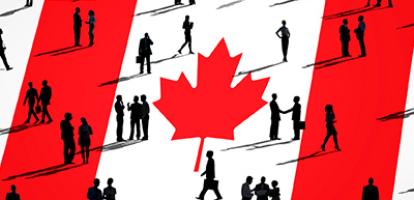For Canada, the deal involving 11 of our trading partners will be good on balance, albeit it will have negative—or potentially negative—impacts on several sectors or sub-sectors on the Canadian economy.
The Trans-Pacific Partnership Agreement, completed and announced just two months ago, is broad-ranging, opaque for many, and complex like most international trade agreements.
For Canada, the deal involving 11 of our trading partners will be good on balance, albeit it will have negative—or potentially negative—impacts on several sectors or sub-sectors on the Canadian economy.
The benefits and potential costs of this not-yet-signed or implemented agreement will need to be discussed and assessed by a wide variety of individuals and groups in Canada, including other levels of government in their areas of jurisdiction, in every part of the country.
Following this process of extended and inclusive consultations, if the agreement is deemed on balance to be good, if not perfect, in addressing on balance a large number of relevant economic policy issues, the government of Canada should sign the deal and proceed with its implementation. If found wanting, especially in the case of other TPP participating countries demanding changes to the negotiated text as well, further negotiations will be required. The prospects then of this deal ever seeing the light of day will be very much less.
In any case, there is a long road ahead for the TPP, as there is for the Comprehensive Economic and Trade Agreement between Canada and Europe that has been negotiated, but not yet ratified or implemented, well over a year ago.
Trade agreements have both geopolitical and economic rationales. The economics are rather straight-forward. From the time of Adam Smith and David Ricardo, more international trade has been seen to lead to more efficiency in domestic markets, more innovation in terms of newer technologies, ideas, processes, and organization, more competition, a wider variety of goods and services available to consumers, and lower prices. The story doesn't end there, and there are many imperfections in the marketplace, but the basics are clear.
In terms of the geopolitical and geostrategic objectives of a trade agreement, however, the outcomes are more diffuse.
International commercial relations—the interchange between and amongst business groups and individuals, students, the artistic community and many others—will be rules-based because of an agreement freely entered into and thus will lead to more predictabilty in everyday life. Solutions to international disputes will tend to be non-military—interested parties or stakeholders will be more capable of persuading their respective political leaders to maintain the peace to maintain and expand prosperity at home and abroad.
This latter case is very much relevant to the TPP, with a mutually-dependent but competitive relationship between the world's dominant power and a rapidly-rising, emerging one, the United States and China, the TPP and other international arrangements should help mitigate tension and provide a workmanlike environment for the two countries to work in to the benefit of all.
The president of the United States has made the geostrategic element of the TPP clear; rather than focussing on the prospective economic gains of the TPP, he has focussed on the fact that if the United States doesn't write the trade rules, China perhaps will. This argument at the end of the day might well persuade United States Senators and Representatives to overcome their local and regional concerns and objections and approve the deal as negotiated over the course of 2016 or perhaps 2017-18.
The TPP, as all other trade arrangements, has chapters on traditional elements such as border taxes (tariffs), non-tariff barriers, regulatory matters involving food and many other standards, agriculture, services, investment, intellectual propeerty and dispute settlement. It also has new and highly innovative provisions on matters such as electronic commerce and other digitally-related matters, state-owned enterprises, small business, environment, labour, and economic development, all reflecting a rapidly-changing world economy.
It is thus overall an innovative, higher standard trade agreement which could, if approved and implemented, be a first major step in weaving the world together economically in a 21st-century context.
But the domestic economic implications of the TPP for each and every country involved must be assessed and understood. The deal's potential impact on the farmer, the industrial worker, the professional, the executive, and the consumer more generally, will have to estimated as best as our tools and methods of estimation currently available can. What will be the impact, for example, on the person sitting at a Tim Hortons, or at a bar, and how can and should the consequences of the deal on that individual, his or her family and friends be explained?
While economic analysis for the economy as a whole shows positive, but minimal, gains for Canada with the deal as negotiated, it does show slightly more gains for the US, and even more for several of the emerging economies in Asia. But these expected gains are likely underestimates—the dynamism unleashed by the deal in terms of more investment, more innovation, and more knowledge by the business community and others of the expanded opportunites might lead to greater gains than those that can be measured at present.
But the impact on certain sectors in the Canadian economy such as dairy, auto parts, fisheries, and the knowlege-intensive industries cannot be underestimated and need to be thought through carefully and credibly.
Nothing in public policy, including in trade policy, is perfect. But perfect must not be the enemy of the good. The months ahead will need each of us, wherever we are on either side of the vast Pacific Ocean, to come to a conclusion about the merits or otherwise of the TPP and whether or not we should proceed with what has been negotiated in the name of us all.
John Curtis is a senior fellow at the C.D. Howe Institute, and was the founding chief economist of Canada's foreign affairs and international trade department.
editor@embassynews.ca
Published in Embassy News





